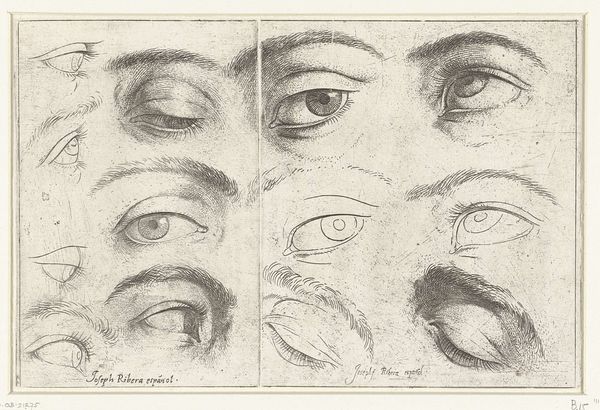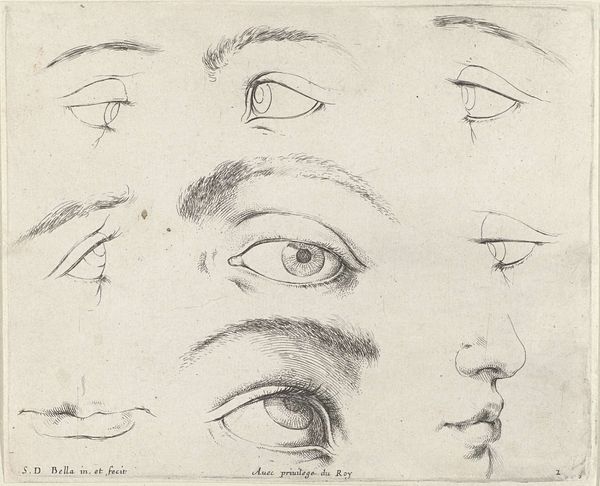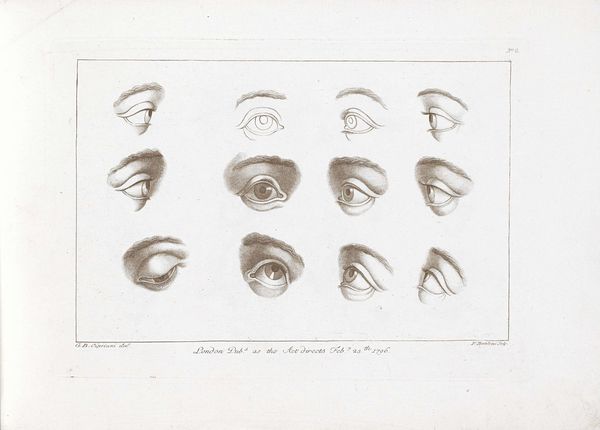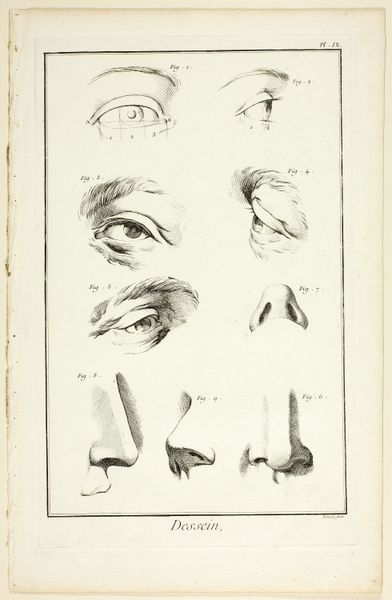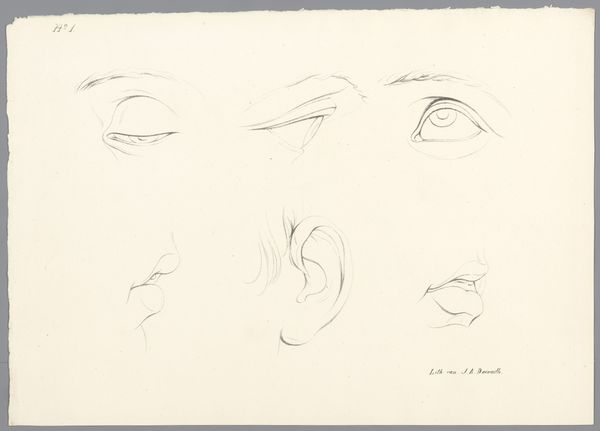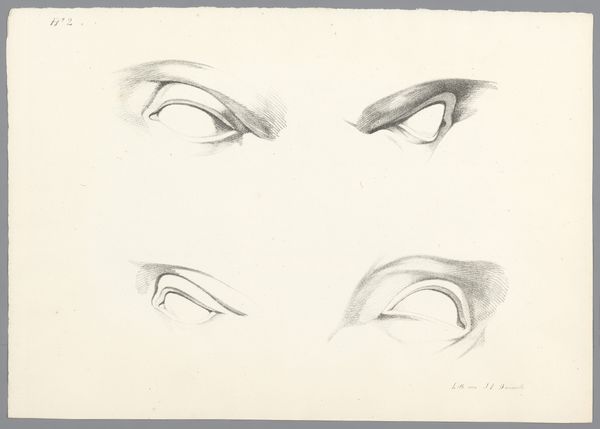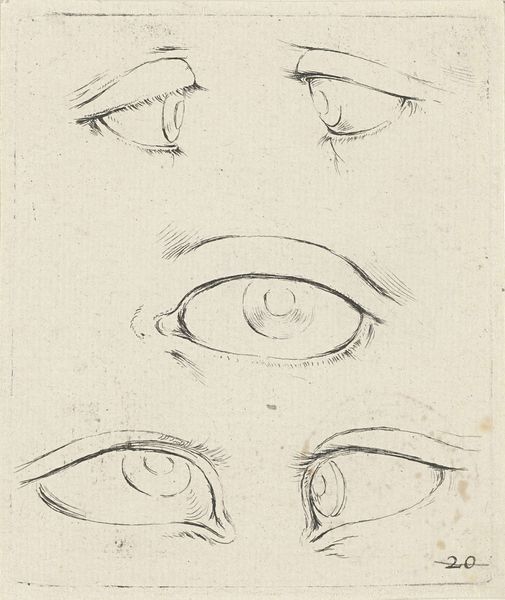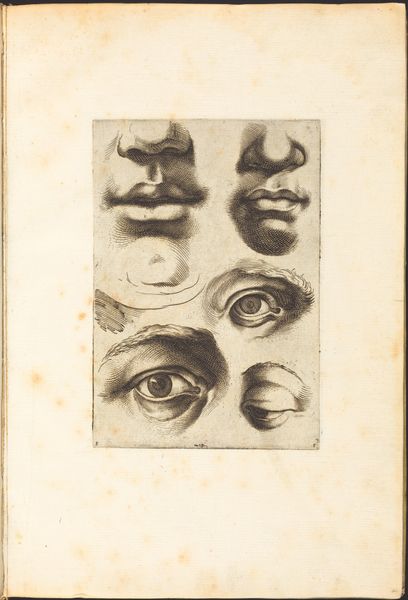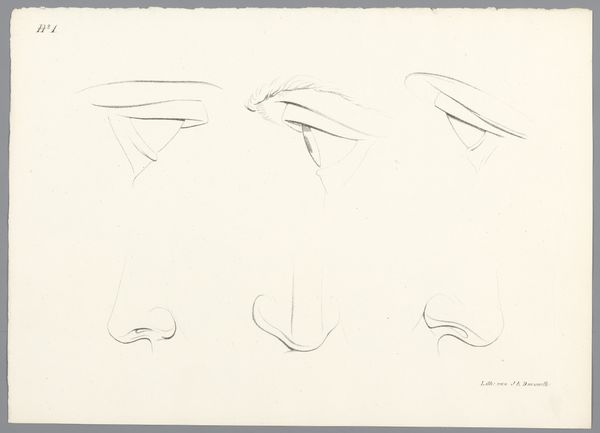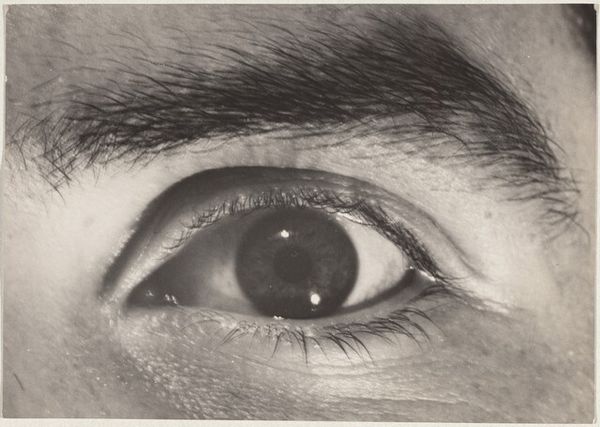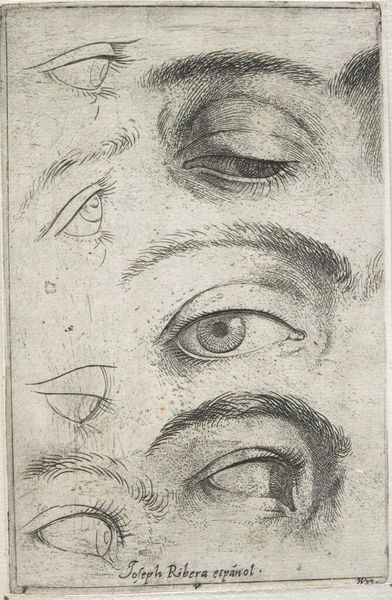
drawing, pencil
#
portrait
#
drawing
#
caricature
#
pencil drawing
#
pencil
#
line
#
portrait drawing
#
academic-art
#
realism
Dimensions: height 322 mm, width 489 mm
Copyright: Rijks Museum: Open Domain
Curator: Immediately, I’m drawn to the variety of line weights—from delicate eyelashes to more robust shadows defining the eye sockets. Editor: Today we’re looking at a sheet of sketches titled “Zes studies van ogen in verschillende tekenstadia”, or Six studies of eyes in various stages of drawing, created between 1836 and 1843 by Bernard Romain Julien, which now resides here at the Rijksmuseum. Curator: I see exactly what you mean, Editor. What’s fascinating here is observing Julien’s hand and method, understanding the progression from a faint outline to rendering form. What materials did he employ to produce such varied tones and expressive outcomes? Editor: Predominantly, Julien appears to have worked with pencil on paper, classic for academic study during this era, and probably relatively cheap and easily accessed which is significant as the production of the drawing and studies such as these, for mass reproduction using processes like lithography, became ever easier. It allowed a democratisation of art never previously seen. Curator: So the social and economic access determined the mode of artistic transmission? Fascinating. It raises questions about accessibility in artistic training as well—did this process shape academic styles? Editor: I suspect it definitely did. The mass reproduction also helped establish academic ideals far and wide and promoted the role of museums and galleries, creating artistic canon as the benchmark of standards. These depictions were circulated amongst educational academies and served as fundamental standards. Curator: Indeed. And observing them as studies gives the piece a strangely compelling incompleteness. Almost voyeuristic. Editor: Absolutely. We're peering into the artist's process, a realm usually concealed, thus affecting our modern perspective about the canon. Curator: For me, the very act of observation, the labor that underlies visual artistry itself, is put on display by it, challenging what and how art enters public spheres. Editor: A vital reminder, Curator. Viewing is also labour. We need these reminders when understanding and looking at images from across centuries of representation and training and access to these is everything.
Comments
No comments
Be the first to comment and join the conversation on the ultimate creative platform.
